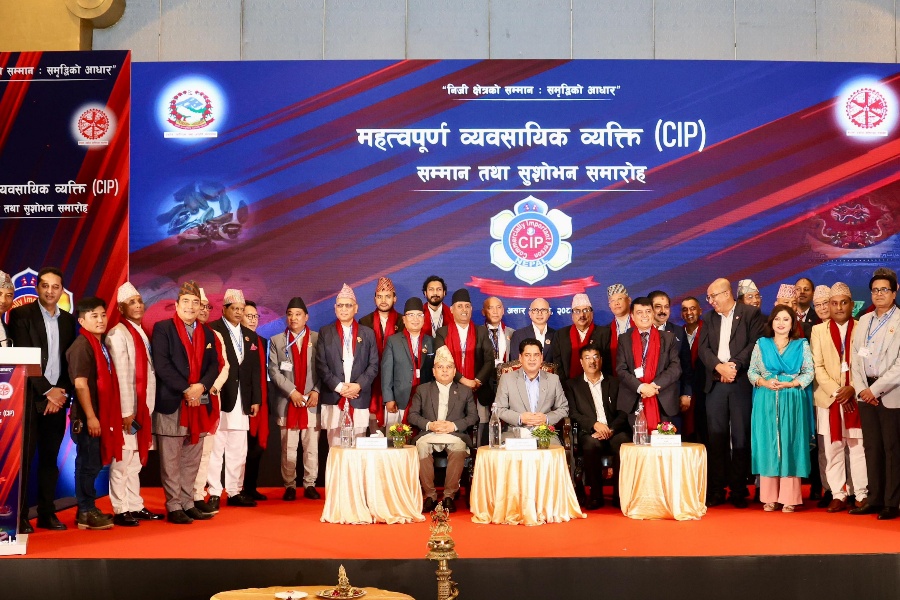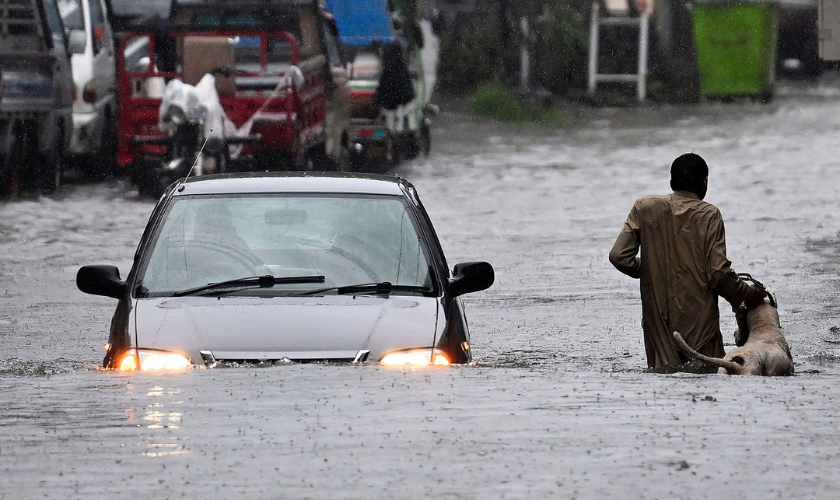The crash of Saurya Airlines’ Bombardier CRJ 200 (registration 9N-AME) on July 24, 2024, at Tribhuvan International Airport was most probably caused by a deep stall triggered by an abnormally rapid pitch rate during takeoff at an incorrect rotation speed, according to the final accident investigation report released Friday, July 18.
Pitch rate measures how fast the nose of an aircraft tilts upward or downward.
The aircraft had been on a ferry flight to Pokhara for maintenance when it crashed immediately after take-off from Runway 02 (Koteshwar side). Of the 19 people onboard, 18 were killed. The sole survivor was Captain Manish Ratna Shakya. The aircraft had been grounded for 34 days prior to the flight, but maintenance checks were duly carried out, and a special flight permit had been granted a day earlier by the Civil Aviation Authority of Nepal (CAAN).
The final report, made public by the Ministry of Culture, Tourism and Civil Aviation, highlighted several serious lapses by Saurya Airlines. These included the use of an incorrect speedcard containing erroneous takeoff speeds for 18,500 kg Take Off Weight (TOW), improper loading of cargo without weighing or securing equipment, and the presence of non-essential personnel onboard. The investigation found that the pitch rate during takeoff reached 8.6 degrees per second—significantly higher than normal—and the aircraft rotated at a lower-than-recommended speed. Additionally, the absence of a functioning Flight Data Monitoring (FDM) system meant that previous pitch-related anomalies had gone undetected.
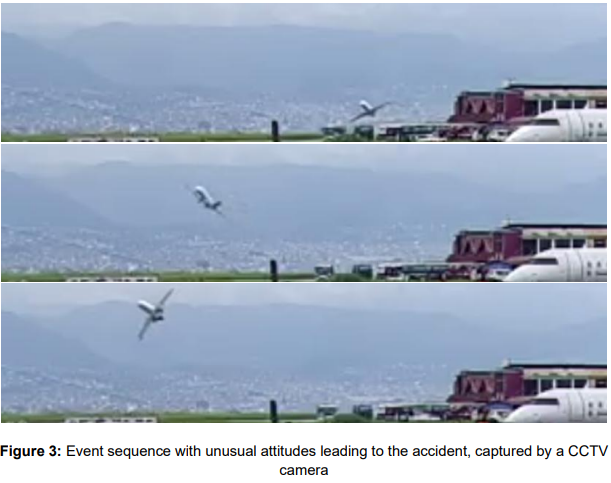 Despite the operational failures, investigators confirmed that the aircraft was technically airworthy, weather conditions were favourable, and the pilots were fit to fly. However, the use of a speedcard with incorrect V-speeds was a critical factor.
Despite the operational failures, investigators confirmed that the aircraft was technically airworthy, weather conditions were favourable, and the pilots were fit to fly. However, the use of a speedcard with incorrect V-speeds was a critical factor.
"The relevant V-speeds used for the event flight were V1 = 114 knots, VR = 118 knots, calculated based on the incorrect page for 18,500 kg TOW in the speedcard for 18,137 kg TOW stated in the load and trim sheet," the report said. "The required V-speeds for 18,137 kg should be V1 = 117 knots and VR = 122 knots."
"The required relevant V-speeds for the estimated revised TOW of 18,300 kg are V1 = 118 knots and VR = 123 knots," the report added.
Almost immediately after rotation, the aircraft underwent a right, left and right bank before the right wing impacted on the ground, according to the report. Rotation refers to raising the nose of the aircraft during take off.
[Read: Both Regulator and Operator at Fault for Saurya Plane Crash: Preliminary Investigation Report ]
V-speeds are specific airspeeds defined for particular manoeuvres in a given aircraft configuration, according to the United States Federal Aviation Administration (FAA).
V1 is commonly known as the “point of no return” for pilots. It is the takeoff decision speed—beyond this point, the pilot must continue the takeoff even if something goes wrong. “If something goes wrong before reaching V1, the pilot has the option to abort the takeoff and bring the aircraft to a safe stop,” explains a blog by BAA Training Aviation Academy.
This speed is calculated for each flight, based on factors such as aircraft weight, runway length, and weather and runway conditions.
VR is the rotation speed. It is the speed at which the pilot begins to apply control inputs to lift the aircraft’s nose and initiate takeoff.
V2, or takeoff safety speed, is the minimum speed at which the aircraft can safely climb with one engine inoperative. This speed is critical in the event of an engine failure shortly after liftoff. According to BAA Training, V2 ensures the aircraft can continue climbing without stalling, even with reduced engine power.
Historical flight data of the operator revealed numerous noteworthy instances of abnormally high pitch rate during take-off.
[Read: Saurya Airlines Plane Crash brings into Light Nepal’s Poor Air Safety Record ]
“The fact that none of the flight crew noticed the blunder in the speedcard though-out the history of the airline is a critical failure of the flight operations and safety management,” the report added.
The report also pointed to systemic failures within CAAN. The regulator was criticised for weak oversight of unscheduled flight approvals, poor ramp inspections, and failure to enforce safety protocols regarding cargo loading and flight documentation.
According to the report, the emergency response efforts were hindered by blocked access routes around the airport, unclassified emergency zones, and an overall lack of preparedness.
Removal of baggage from the crash site on the event day and their transportation to the Saurya Airlines office, Sinamangal, is equivalent to evidence tampering, said the report, adding, “It shows negligence of airport authority to effectively perform responsibilities in the event of an aircraft accident.”
The investigation further noted that critical flight parameters such as control column and flap handle positions were not recorded by the flight data recorder on either 9N-AME or another CRJ aircraft in the airline’s fleet.
The report also added that Saurya Airlines was found to have not fully complied with the provisions specified in section 4.2.4.3 of the sixth edition of Flight Operations Requirements (FOR) Nepal regarding issuance of operating instructions and providing information on airplane climb performance.
Additionally, the Saurya Airlines operations manual does not reference the importance of a 3 degrees-per-second target for rotation rate, the report added.
The Aircraft Accident Investigation Commission (AAIC), led by former CAAN Director General Ratish Chandra Lal Suman, recommended sweeping reforms.
It has directed all airline operators to immediately review their speed cards and Regulaed Takeoff Weight (RTOW) charts. Operators must also strictly comply with cargo and baggage handling requirements, ensuring accurate weighing, appropriate distribution, and proper latching of baggage and cargo as per operational and ground handling manuals.
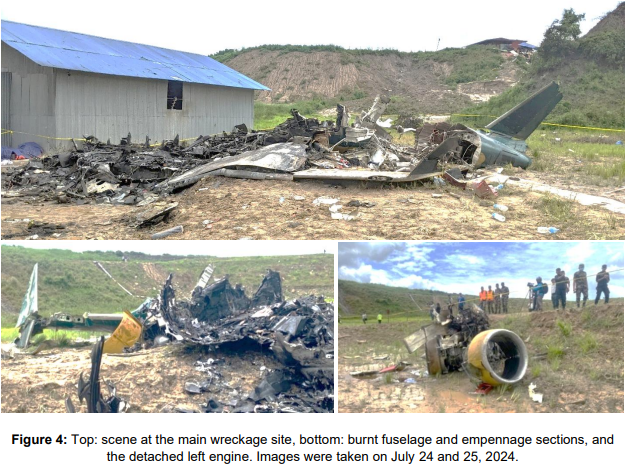 The Civil Aviation Authority of Nepal (CAAN) has been advised to review and update its procedures for permitting non-scheduled flights, including ferry and non-revenue operations. For aircraft equipped with Flight Data Recorders (FDR) or Lightweight Data Recorders (LDR), the AAIC has recommended the urgent implementation of a Flight Data Monitoring (FDM) programme, with a system to ensure compliance with any findings.
The Civil Aviation Authority of Nepal (CAAN) has been advised to review and update its procedures for permitting non-scheduled flights, including ferry and non-revenue operations. For aircraft equipped with Flight Data Recorders (FDR) or Lightweight Data Recorders (LDR), the AAIC has recommended the urgent implementation of a Flight Data Monitoring (FDM) programme, with a system to ensure compliance with any findings.
Operators must revise their Standard Operating Procedures (SOPs) to ensure optimal rotation speeds during takeoff, including clear guidelines for circumstances where these speeds are difficult to achieve. Additionally, operating manuals and SOPs should define target rotation rates, which must be reviewed during initial, recurrent, and routine line training. Operators should strengthen training on determining correct rotation speeds and recognising pitch-up anomalies during takeoff.
The AAIC also recommends digitising critical flight operations materials such as speed cards and RTOW charts. Training on cockpit authority management should be enhanced to promote voluntary safety reporting and encourage the non-flying pilot to intervene when necessary. Ramp handling staff should receive regular training to reinforce their duties in supervising loading, identifying damaged or leaking packages, and ensuring secure cargo handling.
To improve oversight, the AAIC recommends stronger accountability for supervisory staff in cargo operations, ensuring proper use of securing equipment such as nets and straps. A digital system should be implemented for calculating cargo limits, distribution, and centre of gravity during loading. Speed cards must undergo a thorough validation process before use, and SOPs should be updated to include a mandatory cross-check of V-speed values during flight preparation.
Finally, the AAIC recommends that operators establish SOPs for ferry, positioning, and non-revenue flights, ensuring only necessary personnel are on board. When additional personnel are present, cabin crew should be included to handle emergency evacuations.
For Saurya Airlines, the AAIC has issued a series of specific recommendations. It has advised the airline to establish and maintain a robust Flight Data Monitoring (FDM) programme, staffed with competent personnel, as an integral part of its Safety Management System. According to the report, “A competent FDM/FDA programme would have noticed erratic judgements or shortcomings of the crew, such as rapid or unusually high pitch rates/angles during rotation for takeoff.” A well-functioning FDM system, it adds, can proactively identify risks and detect erroneous Flight Data Recorder (FDR) parameters.
The airline has been directed to revise and implement Standard Operating Procedures (SOPs) to stress achieving optimal rotation speeds during takeoff. These SOPs must include clear guidance for situations where reaching such speeds may be difficult. Target rotation rates should be explicitly detailed in the operating manuals and SOPs, and must be regularly reviewed during initial and recurrent training, as well as routine line checks.
[Read: Civil Aviation Overhaul: Decades-Delayed Reform Finally Gains Momentum ]
Saurya must also strengthen training programmes focused on determining correct rotation speeds and identifying pitch-up anomalies during takeoff. The revised SOPs must comply with the requirements outlined in FOR Section 4.2.4.3 to ensure clarity and accountability.
The AAIC further recommends that the airline immediately distribute corrected speed cards to all operating crew members. All flights, including non-revenue ones, must strictly follow loading, weighing, distribution, and securing protocols, as specified in the Operations and Ground Handling Manuals. Only trained personnel should handle cargo operations.
Saurya Airlines is also expected to design and implement a comprehensive Flight Safety Document System tailored to its operations. A transparent and efficient mechanism for reporting and resolving safety incidents or violations must be established.
To support these measures, the position of Flight Operations Quality Assurance (FOQA) Manager, as mandated by Saurya’s Operations Manual (OM Part A, Section 1.5.1.7), must be promptly filled. Additionally, the airline must address the absence or dysfunction of other key safety roles, including the FOQA Manager and Instructor Pilot, as part of broader efforts to rectify organisational deficiencies.
Similarly, the AAIC has issued several recommendations for the Civil Aviation Authority of Nepal (CAAN). It has called for the immediate establishment of a mandatory and robust Flight Data Monitoring and Analysis Programme applicable to all operators.
“As part of the renewal of the Certificate of Airworthiness (C of A) and the Airworthiness Review Certificate (ARC), CAAN shall mandate all operators to submit the status of their flight data monitoring programmes,” the report states. It further adds that the Airworthiness Division of CAAN must ensure all required parameters are recorded in the Flight Data Recorder (FDR) of every aircraft.
The authority is also advised to conduct periodic checks of flight data to detect and address deviations from standard flight parameters. These inspections should also include a review of all cockpit resources provided to crew members, such as Quick Reference Handbooks (QRH) and speed cards, as part of routine flight safety audits.
CAAN must establish clear and detailed SOPs for the approval and operation of non-scheduled flights, including ferry flights. These procedures should outline application requirements, approval criteria, safety protocols, and post-operation reporting mechanisms.
The report stresses that CAAN should ensure the design and construction of runway strips comply with ICAO Annex 14, Volume 1 Standards and Recommended Practices (SARPs), in order to minimise aircraft damage and fatalities during runway excursions. It also recommends that the entire perimeter road at Tribhuvan International Airport be located at a sufficient separation distance from the runway centreline in accordance with ICAO standards.
CAAN must enhance its oversight mechanisms to strictly enforce procedures for securing cargo and baggage, including the proper use of straps, nets, and ensuring the integrity of securing equipment. To monitor compliance, CAAN should conduct random audits and spot checks on ground handling operations.
Furthermore, CAAN is advised to develop a comprehensive risk assessment framework to evaluate the operational, safety, and environmental risks of non-scheduled flights, with particular focus on ferry flights. A specific checklist should be introduced for the approval and acceptance of Regulated Takeoff Weight (RTOW) and landing weight.
Finally, CAAN must monitor and enforce regulations preventing operators from including non-essential personnel onboard non-revenue flights.
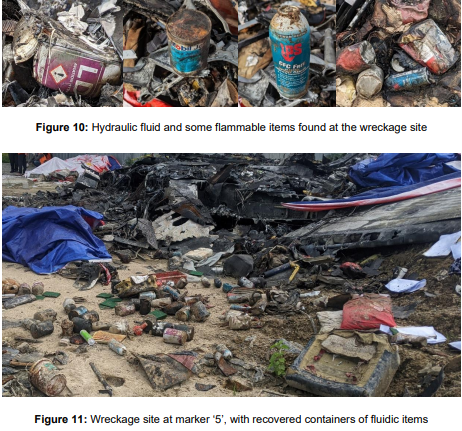 Likewise, for Tribhuvan International Airport (TIA/VNKT), the recommendations include conducting a comprehensive risk assessment to identify and classify critical zones for rescue operations. These zones should be defined based on their proximity to runways, passenger terminals, fuel storage areas, and other high-risk locations within and around the airport.
Likewise, for Tribhuvan International Airport (TIA/VNKT), the recommendations include conducting a comprehensive risk assessment to identify and classify critical zones for rescue operations. These zones should be defined based on their proximity to runways, passenger terminals, fuel storage areas, and other high-risk locations within and around the airport.
“These critical zones shall be incorporated into the Airport Emergency Plans and revised to include comprehensive protocols tailored to each zone,” the report states. “These zones should be prioritised during emergency drills and exercises, with specialised training provided to airport staff and emergency responders for handling incidents.”
TIA has also been advised to establish and implement robust communication and coordination procedures to ensure effective collaboration among emergency response teams, including Aerodrome Rescue and Fire Fighting (ARFF) services, the Nepal Army, Nepal Police, and airport authorities.
The report calls for the immediate removal of all obstructing construction materials near emergency access doors. These doors must be designated as no-storage zones, with strict enforcement and regular inspections to ensure they remain unobstructed at all times.
Another key recommendation is the allocation of adequate resources based on findings from the Task Resource Analysis (TRA), enabling ARFF services to function at full capacity during emergencies. TIA should also provide advanced training to ARFF personnel to enhance their capability and readiness to handle a wide range of emergency scenarios.
For the Government of Nepal, the AAIC recommends establishing a permanent investigation entity equipped with sufficient financial, human, and technical resources to meet international obligations under Annex 13 of the Chicago Convention.
This independent investigation commission should operate in line with prevailing international practices. The government is also urged to establish mechanisms to routinely review and investigate aviation-related issues in Nepal, and to ensure the implementation of safety recommendations issued by accident investigation commissions to the relevant organisations.
Similarly, to the manufacturer of the aircraft, the AAIC recommends reviewing as to why the right angle of attack of the aircraft tends to rise earlier than the left. “This is significant in the fact that the right wing may be prone to early stall,” the recommendation added.
[Read: Nepal’s Aviation Sector in the Spotlight as EASA Lifts PIA Flight Ban ]
The stick pusher activated after around 6 seconds of stick shaker activation. “The stick pusher activation requirements should be further investigated,” the report said.
Notably, the report mentions that the CRJ series aircraft has known aerodynamic characteristics that make it susceptible to control issues on take-off with wing contamination (ice/snow) or with excessive pitch rates/over-rotation on take-off.
“High pitch rates can result in a deep stall, as seen in the flight data for the accident flight,” it added. “A warning in the CRJ manual alerts crew to this issue. Despite the warning, it appears that the crew allowed the pitch-rate to get excessively high. This could indicate a training and standardization or a checking inconsistency within the airline.”
Areas for improvement in this case include ensuring the aerodynamic characteristics of the CRJ aircraft are adequately explained in training manuals and during simulator events. Routine download and evaluation of FDR parameters could assist in identifying parameters that are producing erroneous or suspect values, the report added.
The final report was handed over to Minister Badri Prasad Pandey, who pledged full implementation. The document has been made available to the public on the ministry’s website .
This news has been updated for clarity.









